A version of this article appears on The Eco Hub with Candice Batista.
When going green, it’s important to think about the choices you make and how those choices affect our natural world. Small changes at home can make a big difference in the long run. You don’t have to do it all at once. The following resources have taken me years to amass and will provide you with tips and tricks to start down your own green path. You can literally pick one tip a month and focus that! The best news is, these ideas will help you go green and save money. I’ve included an in-depth shopping guide with links as well.
There is a room by room guide following the Big Stuff!
The BIG stuff:
Houses waste a lot of energy, the average Canadian home wastes up to 30% energy for heating and cooling as a result of cracks and gaps in roofs and walls. If you live in a house, get a home energy audit, this will help you find problem areas in your home and they will provide solutions on how to address some of those problems.
Insulating walls and cracks this will help you regulate your homes internal temperate, it also improves the effectiveness of your existing heating and cooling system. Opt for non-toxic insulation, your energy auditor can help you with that.
Quick tip: Stay away from Urea Formaldehyde Insulation and Vermiculite.
Save Money: The attic is the best place to start, a well-insulated attic can save you 20-60% on energy bills.
Windows: Two ways to do this, invest in highly rated energy star windows, they will cut your energy bills by 18% immediately. They also last 20 years. Be sure you pick the right ones, do your homework first.
Quick tip: If you can’t afford new windows: Let the sunshine in: leave south and west facing windows uncovered in the winter months, or go for The Warm Window System.
Save Money: Caulking and weather-stripping will stop between 25% and 50% heat loss. If you do go with Energy Star Windows, you will save 12% in heating costs and save about $500 a year on your utility bill.
Heating: Install a programmable thermostat, this a great way to control the temp in your home and when your furnace comes on and how warm it is.
Quick Tip: Reducing the temperature in your home at night by only 4 degrees will help you save almost 7% on natural gas. If your furnace is over 20 years old, its time to replace it.
Save Money: You are eligible for a rebate of between $375 and $750 from the EcoEnergy Retrofit Program if you buy an energy star rated furnace.
Ontario Power Authority will give you up to $550 in rebates as well if you replace your current heating or cooling system with an energy star certified one.
Enbridge also offers a Weatherization Retrofit Program for eligible low-income Enbridge Gas Distribution customers, see the website for more. Cool the a/c. Only use it when you absolutely have to! I’m not a big of it! And I hate the humid summers, so does my hair!
Quick Tip: Plant trees around the house, they will create shade and help reduce the inside temperature. Get rid of your paved surfaces too. Add a radiant barrier to your roof and put light colored materials on your roof to help keep the inside of the house cool.
Save Money: If you buy an energy rated A/C, you may quality for $250 in rebates from the federal government.
Solar Hot Water: Solar water heating systems usually cost more to buy and install than conventional water heating systems. Solar water heating systems include storage tanks and solar collectors. There are two types of solar water heating systems: active, which have circulating pumps and controls, and passive, which don’t. It’s really up to the individual as to which one you prefer.
Quick Tip: Not sure about the price and what’s right for you? Toronto Renewable Energy Cooperative recently launched The Our Power model, this bundles solar system orders together into a professional renewable energy project that uses a competitive bidding process to select the best vendor offers.
Save Money: On average, if you install a solar water heater, your water heating bills should drop 50%–80%. For the average family of four, a solar water system could reduce utility bills by $325 per year if you use an electric water heater and by $250 a year if you use a gas water heater.
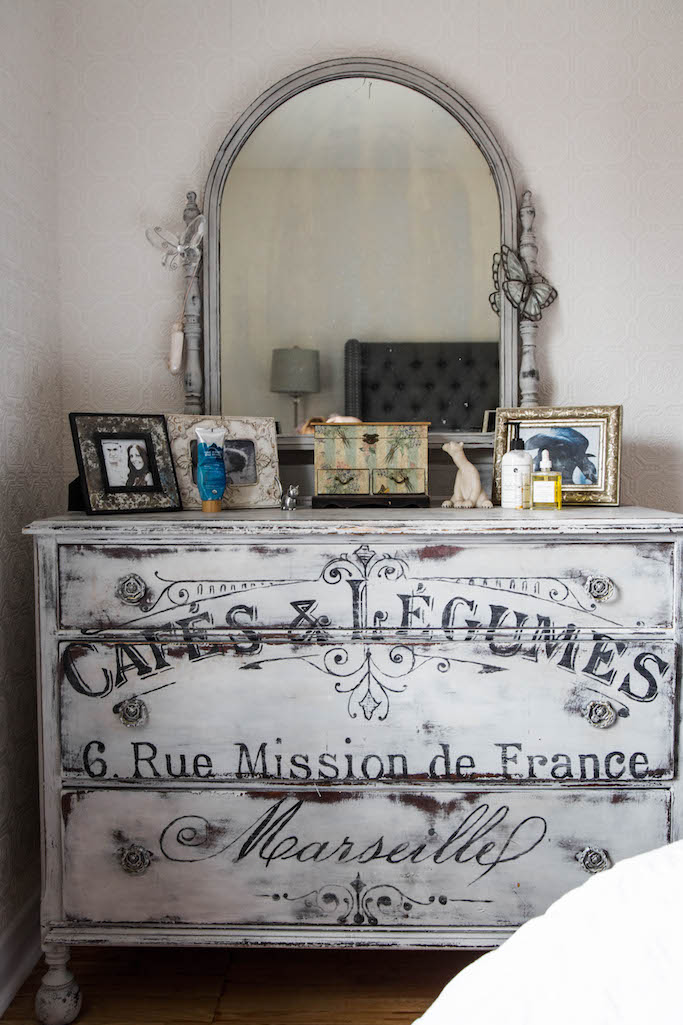
The BEDROOM:
Buy eco paints; conventional paints give off volatile organic compounds, these off-gas, meaning even after they are dry they still give off toxic chemicals, if you or your kids suffer from asthma or allergies, it’s a good idea to make the change. Have a look at Steeles Paints or Sip Distribution for sourcing eco-friendly home materials.
Quick Tip: If you need to dispose of your paints, Toronto’s Community Environment Days will take them for free.
Save Money: Boomerang Paints offers recycled decorative paint of great quality in several trendy colors. Protect your environment using their recycled paint & stain products., only about 12 bucks a gallon.
Pillow Talk: Go for natural fibers instead of synthetic materials: Organic cotton, wool, and buckwheat are great alternatives. You also want to avoid pillows that contain formaldehyde. The same principles apply to your duvets and comforters.
Quick Tip: Organic lifestyles and Dream Designs offer some great deals on eco bedding. For duvets and comforters look for “Pure Grow” labeled wool, it’s sustainable and uses humane animal practices.
Save Money: You can buy hypo-allergenic Natura Pillows at Sears for $59.99 or visit Wool Bed for more affordable choices.
Between the Sheets: Those high thread counts come with a price and I don’t mean when you purchase them! Buyer beware, a great deal of water, pesticides, and chemicals go into making those comfy things, Uzbekistan is the 2nd largest exporter of cotton in the world and one-third of the population are forced to work on cotton farms. Please visit this website to learn more about how your buying practices affect people around the world.
Quick Tip: Organic cotton is grown without the use of pesticides, bamboo liners and organic hemp are also great alternatives. Coyuchi is a great resource.
Save Money: Home Outfitters, Sears and Bed, Bath and Beyond carry affordable organic bed- sheets.
Now when it comes to the mattress, it’s simple. Avoid ones with harmful glues, pesticides, and flame retardants. Look for natural fibers, they have built-in protective properties, they absorb and release the moisture we emit when we sleep, therefore attracting fewer dust mites and bacteria. This guide will help you.
Quick Tip: To avoid dust mites, buy a dust mite barrier, a good one! All natural washable version, Organic Lifestyle carry’s a great option.
Save Money: IKEA offers a new green mattress, the Sultan Heidal Bed, its natural organic cotton and latex and also has corn-based fabric. $999 for a queen size.
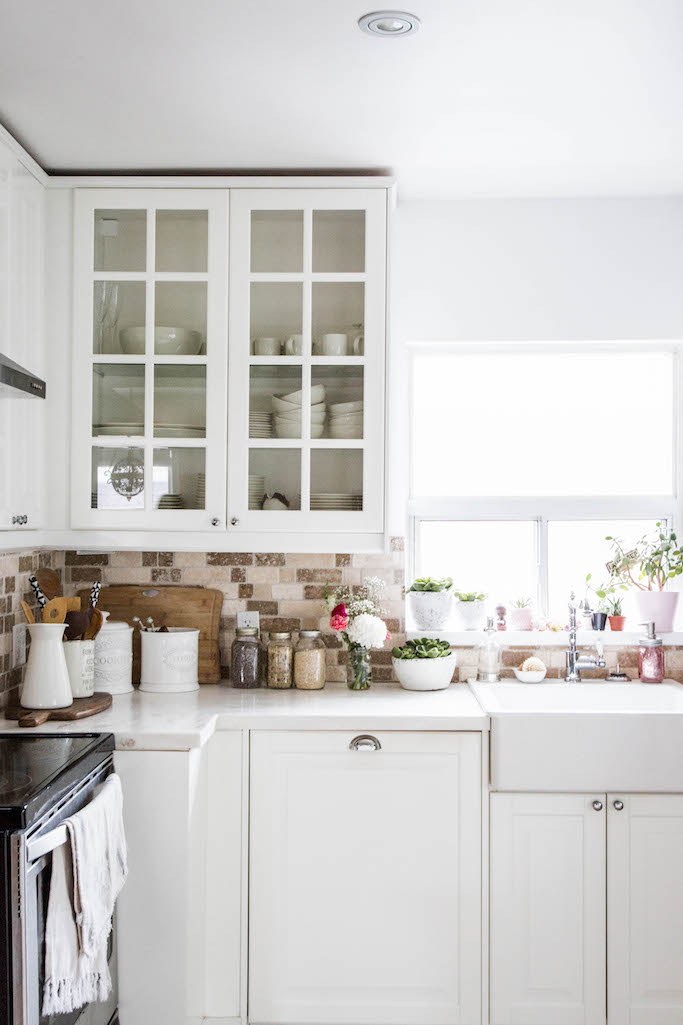
The KITCHEN:
The Fridge: Your fridge generates about 2,000 pounds of carbon dioxide every year, so it’s important to make sure it’s an efficient one. If it’s over 10 years old, its time to replace it, look for one with a good EnerGuide rating. The EnerGuide label tells you the appliances annual energy consumption. The lower the kWh/yr number, the more energy efficient the appliance.
Quick Tip: Regular maintenance will keep your fridge running more efficiently, Side by side fridges can use up to 20 percent more power than the freezer top ones.
Save Money: Got a second fridge in the basement that’s as old as your grandpa, get rid of it, it’ll save you $150 bucks a year on your utility bill.
The Wash Up: Dishwasher
An energy efficient dishwasher will use about one third less water. Read the EnerGuide Label and make sure it energy star rated. It’ll use 40% less energy if it is!
Quick Tip: Choose a model that allows you to reduce the amount of hot water you use and pick one that has an automatic air-drying mode and only run it when you have a full load. A full dishwasher is more efficient than washing by hand.
Save Money: If your dishwasher is over 15 years old, replacing it with an energy star rated one, will save you $30 per year in energy costs. The same principles apply to your ovens and stoves.
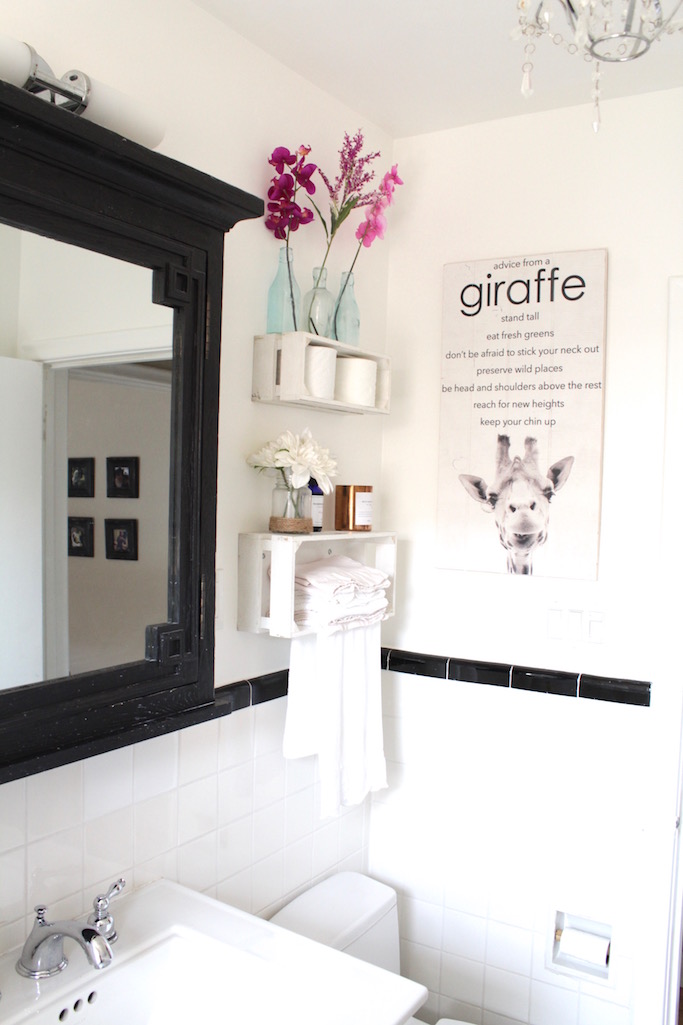
The BATHROOM:
On average, each of us uses well over 100 liters of water a day just flushing the toilet. Toilets account for 28 % of your total indoor water use. Combined with showers and baths, the bathroom represents about 50 % of your home’s total indoor water use.
Check the faucets: A steady drip can waste up to 55 liters of water in just 24 hours, if not looked after, it could add up to 20,075 liters per year. Install a low flow showerhead, you’ll save 15 to 30 liters of water per minute. And install low flow aerators on your faucets. Check for leaks and fix them immediately.
Don’t flush it: The toilet is the largest single water-guzzling appliance in the house using about one third (1/3) of an individual’s total water use. Most older toilets use about 20 liters of water every time they are flushed.
Quick Tip: Take a shower instead of a bath. Don’t flush good money away. Replace your toilet with a new efficient ultra-low-flush toilet and use between 50% and 80% less water per flush, depending on the size of your current toilet. Turn off the tap when brushing your teeth.
Save Money: The City of Toronto offers a $60 or $75 cash incentive to replace a high water use toilet with a City-selected water efficient model. Receive up to $150 for every old toilet that you replace in your business or multi-unit residential property. For $10 you can buy a Water Efficient Kit” from the City of Toronto, which includes a low flow shower head, aerators, leak detection tablets, well worth the money!
THINK BEFORE YOU WIPE:
Now onto a product that we all use, in fact, we here in Canada overuse it. Did you know the average Canadian uses about 22kg of disposable tissue paper products each year, including about 100 rolls of toilet paper? Cutting down trees that are over 100 years old, for me is obscured!
Quick Tip: Always use recycled tissues and toilet paper and make sure they are 100% post-consumer recycled. Envirocare is a good place to start! My hubby hates me for this and so does his tush! Also look for the TCF label that means its “totally chlorine free”, PCF will work as well, that stands for “Processed chlorine free”. Every ton of recycled paper saves 17 trees, 380 gallons of oil, 4,000-kilowatt hours of electricity, 3 cubic yards of landfill and 7,000 gallons of water. And make sure it comes with a third party certification like FSC.
Save Money: Buy in bulk.
ECO – ACCESSORIZE
When it comes to your towels go for Organic or Bamboo, these alternatives are usually grown without pesticides. Bamboo is also very soft. One step up from that would be hemp, it’ll cost you a little more, but it also naturally resists mildew.
Quick Tip: Shower curtain liners are made with PVC or Polyvinyl Chloride which contains phthalates. Phthalates have been linked to asthma and can also act as hormone disruptors. Go for PEVA instead, its vinyl, but has no phthalates.
Save Money: Sears offers good deals on 100% organic cotton towels as well as Bed Bath and Beyond. For shower curtains, PEVA (or polyethylene vinyl acetate) is better than PVC, IKEA and Target in the US offer this as an alternative.
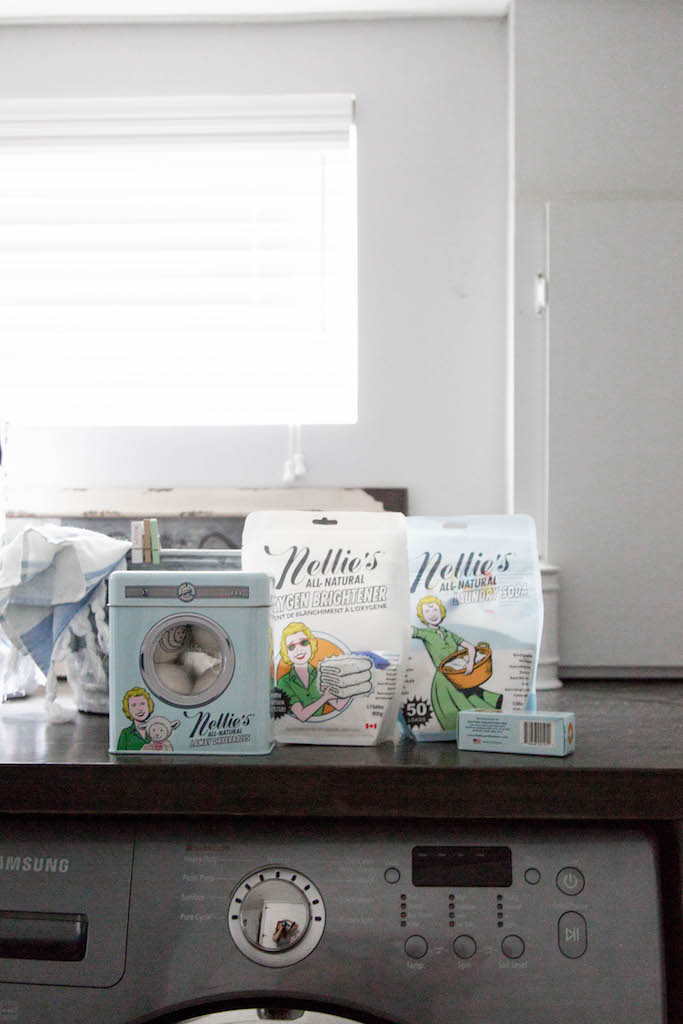
The LAUNDRY Room:
The average household does almost 400 loads of laundry each year, consuming about 13,500 gallons of water. The first thing is to switch to an energy star front loading washing machine, it will save about 7,000 gallons of water per year. That’s just over 26,000 liters.
Dryers are not energy star certified, but there are ways to save money, buy one with a built-in moisture sensor, it turns off when the clothes are dry. Most newer models have this feature.
Quick Tip: Air drying your clothes is the most sustainable option. Clothes last longer when you line dry because there is less wear and tear than when you use the dryer.
Save Money: A front loader will also save you about 100 bucks a year on your water and energy bills. The city of Toronto will give you a $60 rebate if you go with a front loader.
Laundry Detergent:
Look for a detergent that is biodegradable and made from plant- and vegetable-based ingredients (instead of petroleum-based), which means they’re healthier for the planet, from production to rinse cycle.
Keep this in mind, heating the water for a hot wash generates about 9 lbs of greenhouse gas emissions, you’ll generate less than 11 ounces of GHG per wash using cold water. You’’’ save about 90% in total energy use.
Quick Tip: Beware of “cold water” detergents, yes it’s good to wash in cold water; you’ll use about 85% less energy, but many of these detergents still contain harsh chemicals. Also pick sent free options, “morning glory” sounds good yes. Perfumed detergents have phthalates, hormone-disrupting chemicals, not good for us. Avoid bleach where you can.
Good old baking soda does a great job at removing stains. Or you can make your own detergent. Add half to one cup of white distilled vinegar to your rinse cycle for a natural fabric softener.
Save Money: Choose concentrated detergent
Concentrated laundry detergents have reduced packaging and a smaller carbon footprint (because a more useful product can be shipped using less space and fuel). Plus, they deliver more bang for the buck. Check out Nellie’s, Attitude and BioVert.
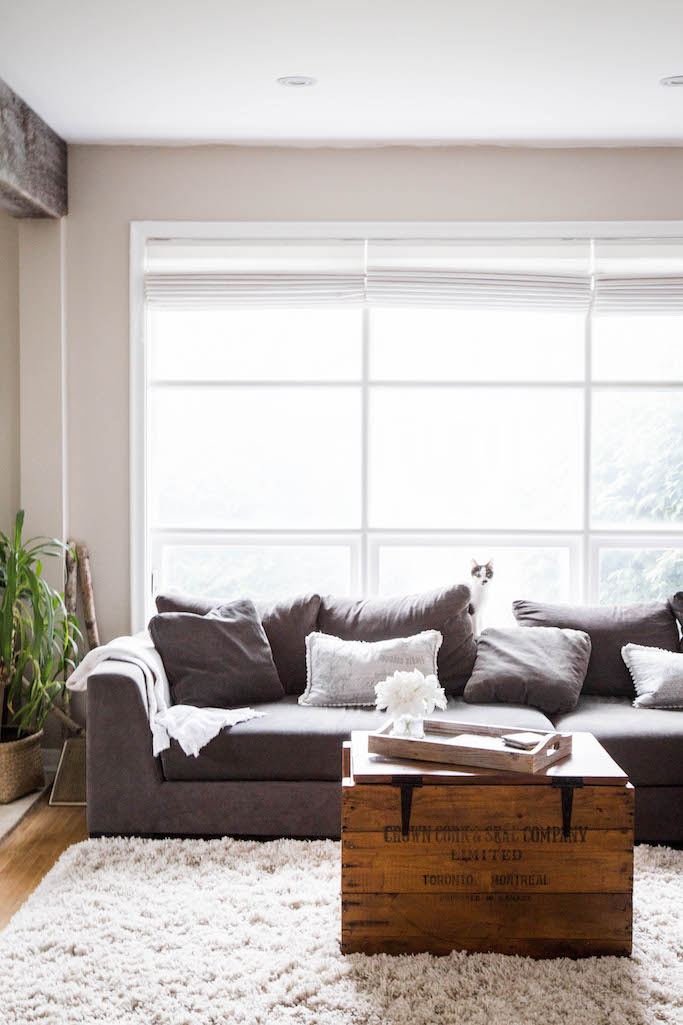
The LIVING Room:
Don’t Stand by.
Standby power costs you, me and the planet. It’s that little red light you see on your tv’s, microwaves, kitchen appliances, cell phone chargers etc. They are not really off, in fact, they are sucking about 5% of your household electricity, what a waste. The Kill A Watt device will show you exactly how much power a given appliance is using when it’s in standby mode. A
Quick Tip: Put all your plugs on a power strip and simply turn it off when you are not using them. Smart Strip by Bits Limited is a good option.
Save Money: Your television can cost you as much as 60 dollars a year in standby power. The Smart Strip will turn it to off mode automatically and it’ll pay for itself within the first six weeks.
Get rid of the toxins in your living room. Carpets do make the room warm and cozy but are also not good for your health. Carpets are made up of tiny fibers, these fibers trap mold, dust, pesticides and even dust mite droppings, gross isn’t it. That combination of yuckiness is a perfect trigger for allergy sufferers. Fibers, backings, and glue made from synthetic petroleum products are known to give off volatile organic compounds and can cause irritation in the lungs. To avoid build up, the key is to clean your carpet often and properly.
Quick Tip: Vacuum it often and use a HEPA filter, they can remove dust particles and clean the air too. HEPA filters can remove 99% of allergen particles. And, go with wood if you can, wood floors made from renewable resources are a great alternative. Look for wood with the FSC (forest stewardship council) label. Bamboo or cork also work well.
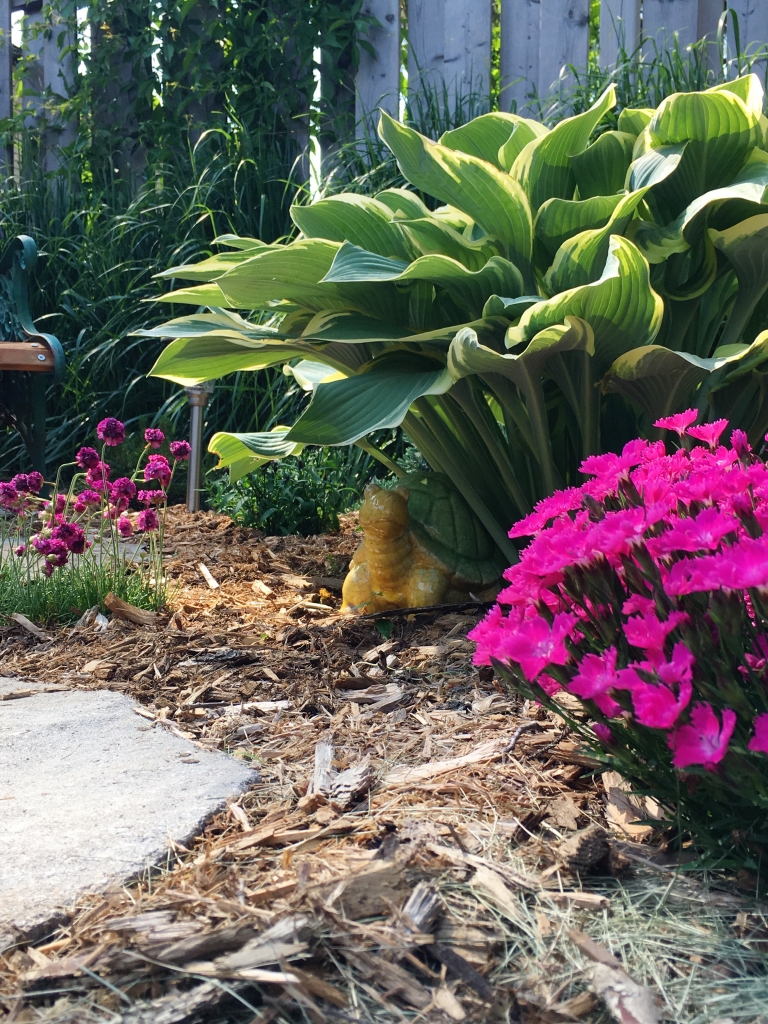
The GARDEN:
Go Native: Planting native plants and flowers is one of the best things you can do for your garden and the planet too. To do it on the cheap, LEAF, (local enhancement and appreciation of forests) offers subsidized programs. Compost your food scraps. This gives you 100% organic fertilizer that can go back into your garden, it’s free and will provide your plants with nutrients like phosphorus and nitrogen. Mulch regularly, this will help reduce erosion and the amount of water your garden needs.
Quick Tip: Buy 100% certified organic mulch or make your own by using your grass clipping, fallen leaves, and shredded newspapers.
Save Money: The City of Toronto offers free mulch at community environment days, all you need is a shovel and a bag. Grow your own food or join a community shared agriculture program or CSA – you have shares in the farm harvest and have a direct connection to the farmer. Everdale is a great place to start. Co-op’s like Karma Co-op is great too.
If you live in an apartment you can grow food in a box, this is amazing, simple technique, called container agriculture can be applied anywhere. If you want to learn more about urban agriculture, click here.
Get a rain barrel, they are cheap and will save you money, there is no need to waste treated water to water your plants, Riversides has one of the best in the world.
Quick Tip: Watch for drips, one drippy hose can waste 950 liters of water a month. In Ontario the use of pesticides on lawns in banned, that’s a good thing. Spread grass seed every Spring or Fall. Choose a blend of seed, including perennial ryegrass and fescue and note the sun/shade guides on the seed packages. Use a lawn aerator to help soil breathe. Aerators can be rented or purchased at most garden centers or equipment rental locations.
Save Money: Make your own natural pest control agent: Mix one tablespoon of vegetable oil with three cloves of crushed garlic. Leave it to soak overnight.
The next morning, strain the mixture and add it to four cups of water and a teaspoon of liquid soap, pour the liquid into the spray bottle and there you have it! Apply it to your garden!
Do you have any ways to go green and save money? Share in the comments below.
Also by Candice: Worried About Pet Health? How To Give Your Fur Baby A Green Lifestyle To Match Your Own
Related: 4 Unexpected Ways to Green Your Beauty Routine Like an Earth Goddess
Going #PlasticFree? Try These 5 Luxe Eco Brands, From Tea To Vegan Lipstick
Get more like this—Subscribe to our daily inspirational newsletter for exclusive content!
__
Photo: Candice Batista




